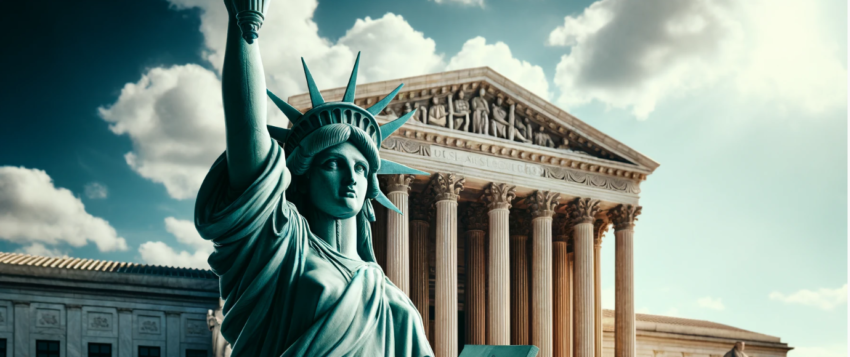| Listen to our audio presentation: Understanding the Global Nuclear Proliferation |
In a monumental ruling, the Supreme Court has unanimously sided with the National Rifle Association (NRA) in a pivotal First Amendment case against Maria Vullo, a former New York state official. The court deemed that Vullo’s actions, which encouraged banks and insurance companies to sever ties with the NRA post-Parkland shooting, amounted to coercion and violated the NRA’s First Amendment rights. This landmark decision reverberates across the nation, affirming the constitutional protections afforded to advocacy groups and setting a powerful precedent against government overreach.
The Core of the Case
The case dates back to February 14, 2018, when a devastating school shooting in Parkland, Florida, intensified national debates over gun control. Following this tragic event, Maria Vullo, then superintendent of the New York State Department of Financial Services (DFS), used her office’s influence to persuade financial institutions to distance themselves from the NRA. The NRA, asserting its rights were being trampled upon, sued Vullo, alleging she utilized threats and inducements to force banks and insurers to cut ties with the organization and other gun-promotion groups.
A Legal Odyssey
The NRA found initial success when a district court ruled their allegations sufficient to claim a First Amendment violation. However, this win was short-lived as the U.S. Court of Appeals for the Second Circuit overturned the decision, arguing Vullo’s actions fell within routine regulatory practices and were justified given the NRA’s controversial standing in New York. In this context, the NRA’s contention that Vullo was engaging in unconstitutional censorship appeared unconvincing, leading to an appeal to the Supreme Court.
The Supreme Court’s Judgement
Justice Sonia Sotomayor authored the compelling majority opinion for the Supreme Court, articulating that the NRA had indeed plausibly claimed a violation of its First Amendment rights. Sotomayor emphasized a critical distinction: while government officials can freely share and advocate their views, they cannot use the power of the state to suppress or punish disfavored expressions. “Government officials cannot attempt to coerce private parties in order to punish or suppress views that the government disfavors,” she wrote, citing precedent from Bantam Books v. Sullivan, a landmark 1963 case.
This case is integral as it reinforces that informal tactics to suppress speech by pressuring third-party intermediaries are as against the First Amendment as outright censorship. “Ultimately, the critical takeaway is that the First Amendment prohibits government officials from wielding their power selectively to punish or suppress speech,” Sotomayor concluded.
Dissenting Concurrences
The court’s consensus was not without additional perspectives. Conservative Justice Neil Gorsuch and liberal Justice Ketanji Brown Jackson wrote separate concurring opinions reflecting nuanced views.
Justice Jackson’s concurrence, while in agreement with the overall judgment, cautioned against broad applications of Bantam Books to similar cases, emphasizing the necessity of specific contextual analysis in establishing government coercion and First Amendment violations. She urged a nuanced distinction between government coercion and a First Amendment breach, underscoring the case-by-case necessity to identify such infringements. This reflective stance adds depth to the court’s decision, ensuring a balanced approach toward future First Amendment cases.
Broader Implications
This ruling is particularly significant amid other high-profile coercion cases pending in the court, notably one involving Republican-led states’ lawsuit against the Biden administration’s communications about moderating online misinformation. The principles underscored in NRA v. Vullo will undoubtedly influence these forthcoming decisions, shaping the contours of free speech and government intervention moving forward.
Next Steps
With the verdict now set, the NRA’s lawsuit returns to the U.S. Court of Appeals for the Second Circuit for further proceedings, potentially setting more legal precedents in its wake. The high court’s unanimous ruling against Vullo underscores a robust defense of the First Amendment, sending a clear message against the improper exercise of governmental power over advocacy groups, regardless of their popularity or political stance.
Information Box
Key Highlights:
– **Decisive Ruling:** The Supreme Court’s unanimous decision asserts that government officials cannot coercively use their power to infringe on First Amendment rights.
– **History:** The NRA sued Maria Vullo post-Parkland shooting alleging coercive tactics to sever financial ties.
– **Legal Precedent:** Based heavily on the 1963 case Bantam Books v. Sullivan, emphasizing informal censorship is unconstitutional.
– **Justice Sotomayor’s Role:** Authored the majority opinion reinforcing free speech protections.
Background Fact:
– **Parkland School Shooting:** A tragic school shooting in Parkland, FL, on February 14, 2018, left 17 people dead and reignited nationwide debates over gun control, leading to Vullo’s controversial actions against the NRA.
Reference 1:
Knutson, Jacob. Axios. Supreme Court sides with NRA over First Amendment lawsuit.
Reference 2:
American Civil Liberties Union (ACLU). Supreme Court Unanimously Rules in Favor of NRA in Free Speech Case.
Reference 3:
Dorman, Sam. Epoch Times. Supreme Court Unanimously Rules for NRA in Free Speech Case. May 30, 2024.

